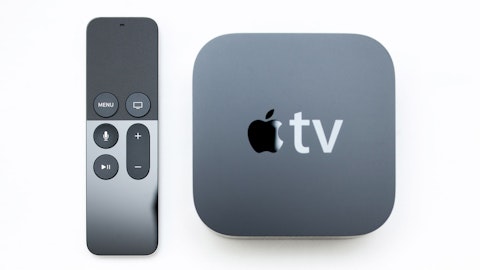So, we didn’t really have a chance to do that just given the nature of that dispute ending before football. So, in terms of just what’s driven it, I think, and you guys know, I mean, we’re very strong in the beginning of the fall sports calendar. I think this year, just like any year, the NFL, obviously, a key driver, albeit that this year, I think, is quite special because the pressure from YouTube TV, I think, was extraordinary. And I just mentioned on the last question, the number of discounts, the amount of discounting, the amount of money that was poured into marketing, didn’t really have any impact on our ability to drive subs. I think another piece of it is that the college football season also picked up pretty quickly this fall. I think there were some interesting games that have also been strong drivers.
But again just to highlight the Disney dispute didn’t drive as many as we had intended just due to the length of the dispute resolution.
Nick Zangler: Got it. Okay. Well then, all that considered then and maybe the World Cup was such a driver last year, but I guess the guide that you’re implying for fourth quarter, obviously, beats numbers — a strong guide. But I guess, the sequential improvement from 3Q to 4Q, it would suggest that maybe there’s still incremental subscribers to go. Like, I would have expected maybe a larger guide from 3Q to 4Q, given what you’ve done historically. And then, I was thinking maybe this Charter dispute had a pull-forward effect and that’s why the 4Q guide isn’t as significant. But just maybe you could just talk about the 4Q subscriber guide, how you’re thinking about that relative to what you just put out? And then maybe with reference to, I think you guys increased last year sequentially 200,000 subscribers from 3Q to 4Q, just in consideration of what you’re guiding this time around?
John Janedis: Nick, why don’t I start. This is John, and if David wants to come in at the end, obviously, you can feel free. But, look, it’s always hard to know in terms of the pull forward, but I would say, as you know, we’ve been focused on improving profitability. And so, we started the year expecting North America subs of about 1.52 million at the midpoint of the guide and revenue of, call it, about $1.2 billion or $1.21 billion at the midpoint. And so, to your point, we’re now forecasting 1.591 million subs at the midpoint, revenue of $1.32 billion. So, we’re now expecting sub growth of, call it, 10% for the year. To your point about the World Cup, that did benefit us pretty meaningfully last year. And so, if we adjust for that, it’s more like, call it, a low double-digits, a low-teens type of growth year-to-year.
And so, given the sub growth that we were seeing and how the cadence came throughout the year, we’re being slightly less aggressive on marketing to further drive that profitability. But again, hard to know on the pull-forward.
David Gandler: Yeah, I would say, look, I think you’ve — you guys have seen how we’ve guided throughout the year. I think, again, just thinking about how dynamic our industry is with all the different changes that are happening almost weekly, I think we want to be a little bit conservative going into the end of the year. And, as we’ve said now numerously, we’re very focused on profitability. And so, the goal is to drive revenue over subs, because that’s always been — it’s always been the opposite. And in order for us to hit that ’25 target, we want to make sure that we’re focused on customers that are profitable versus just subscribers for the sake of subscription. So, there’s some conservatism in that, and obviously, we’ll do our best to continue to remain efficient.
Operator: Your final question comes from the line of James Goss with Barrington Research. James, your line is open.
Unidentified Analyst: Good morning. This is Pat on for Jim. I had a follow-up question with regards to FAST channels. Just wondering the extent to which those are tailored for Fubo, and then, kind of like, just regards to how engagement on those channels has fared relative to some of the other content relationships you may have walked away from given just your focus on kind of more sports-first content?




